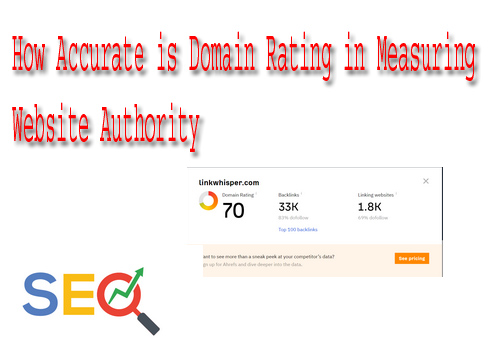Introduction
In the ever-evolving world of SEO, various tools and metrics are used to measure a website’s strength and authority. One such tool is Ahrefs, widely known for its powerful features in SEO analysis. At the heart of Ahrefs’ suite of tools is its proprietary SEO metric, Domain Rating (DR), which is designed to measure a website’s authority based on its backlink profile. But the real question remains: is Ahrefs’ Domain Rating truly accurate in reflecting a website’s authority and SEO potential?
How Accurate is Domain Rating in Measuring Website Authority?
While DR is widely used and considered a reliable tool within the SEO community, there are nuances to its accuracy. Let’s explore both the strengths and potential shortcomings of Ahrefs' Domain Rating.Strengths of Domain Rating
- Comprehensive Backlink Analysis: One of the reasons DR is considered accurate is because Ahrefs uses a vast database of backlinks. Ahrefs is known for its extensive web crawling, which allows it to assess the number and quality of backlinks pointing to a website. This makes DR a robust indicator of how well a site is performing in terms of backlinks, one of the primary ranking factors in SEO.
- Simplified Metric for Website Authority: DR provides a quick, easy-to-understand snapshot of a site’s overall authority. Instead of combing through thousands of backlinks, DR boils down the analysis into a single, digestible number, which can be very useful for marketers, SEOs, and business owners who want an at-a-glance evaluation of their site’s authority.
- Useful for Competitive Analysis: In competitive niches, DR can be a helpful tool for evaluating how your website stacks up against competitors. By comparing the DR of your site with that of others, you can gauge where you stand in the competitive landscape.
Limitations of Domain Rating
- Not a Google Ranking Factor: One important limitation of DR is that it’s not a direct ranking factor in Google’s algorithm. While DR is a strong indicator of a website’s backlink health, Google uses far more complex and nuanced methods to rank websites. Relying solely on DR could provide a skewed view of your SEO performance.
- Backlink-Focused Measurement: Domain Rating primarily focuses on the backlink profile, which, while crucial, is only one piece of the SEO puzzle. Factors like content quality, on-page SEO, site structure, and user experience are not directly measured by DR, making it an incomplete metric if you’re looking for a full picture of a website’s SEO authority.
- Logarithmic Scale May Be Misleading: DR operates on a logarithmic scale, meaning that it’s much easier to improve from 20 to 30 than from 80 to 90. This can sometimes give a false sense of progress or make it seem like your site isn’t growing when, in fact, you’re making strides. The steep climb near the top can frustrate users, especially in highly competitive industries.
- Fluctuations and Inconsistencies: DR scores can fluctuate due to changes in the backlink profiles of other websites, even if your site’s backlinks remain constant. This interconnectedness can sometimes lead to confusing drops or rises in DR, which may not always reflect the actual performance of your website.
How Does Ahrefs Compare to Other Metrics Like DA and TF?
To understand the accuracy of DR, it’s essential to compare it to other SEO authority metrics, such as Domain Authority (DA) from Moz and Trust Flow (TF) from Majestic.- Domain Authority (DA): Like DR, DA measures website authority based on the backlink profile. However, DA includes additional factors, making it more holistic. Both DA and DR are proprietary metrics, so while they aim to measure similar concepts, they differ in the specific algorithms they use.
- Trust Flow (TF): Trust Flow focuses on the trustworthiness of a website based on the quality of its backlinks. This makes it more specific in its approach compared to DR or DA, which look at both the quantity and quality of backlinks.


